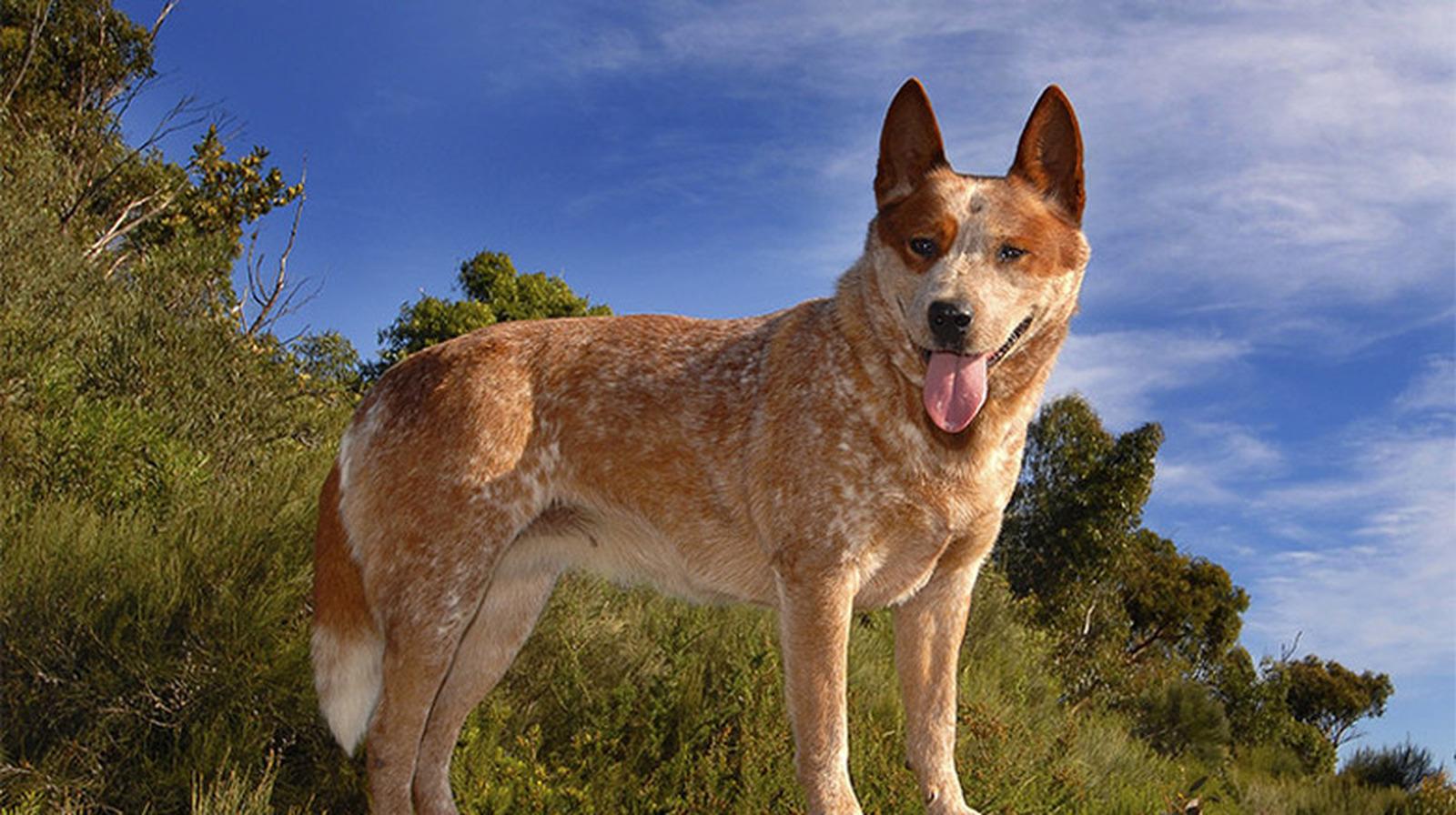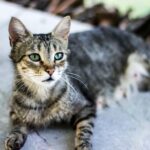If you’re considering bringing a Red Heeler dog into your home, you’re likely curious about their size, growth patterns, and care requirements. These energetic and intelligent dogs, also known as Australian Cattle Dogs, are beloved for their loyalty, agility, and unique personalities. Understanding how big Red Heelers get is crucial not only for planning your living space but also for ensuring you can meet their exercise and health needs.
In this article, we’ll explore the typical size ranges for Red Heelers, their growth stages from puppyhood to adulthood, and provide essential care tips to help you nurture a happy and healthy companion. Whether you’re a first-time dog owner or adding to your furry family, you’ll find valuable insights to guide you on your journey with this remarkable breed.
Table of Contents
- Understanding the Average Size of Red Heelers
- Growth Milestones in Red Heeler Puppies
- Essential Care Tips for Supporting Healthy Growth
- Factors Influencing Size and Growth in Red Heelers
- Q&A
- Future Outlook
Understanding the Average Size of Red Heelers
Red Heelers, also known as Australian Cattle Dogs, are medium-sized dogs that exhibit a unique combination of strength, agility, and endurance. Typically, male Red Heelers range from 18 to 20 inches in height at the shoulder, while females tend to be slightly smaller, measuring between 17 to 19 inches. In terms of weight, adult males generally weigh between 35 to 50 pounds, whereas females usually range from 30 to 45 pounds. This size makes them well-suited for various roles, including herding livestock and participating in canine sports, thanks to their robust build and energetic nature.
During their growth stages, Red Heelers usually experience significant changes within the first year of life. Here’s a brief overview of their growth milestones:
| Age | Height (inches) | Weight (pounds) |
|---|---|---|
| 8 weeks | 10-12 | 10-15 |
| 6 months | 15-17 | 20-35 |
| 1 year | 18-20 | 30-50 |
As your Red Heeler grows, it’s essential to provide them with proper nutrition and exercise tailored to their needs. Regular physical activity not only helps them maintain a healthy weight but also supports their mental well-being. Be sure to incorporate a mix of structured playtime, training sessions, and socialization opportunities to ensure your Red Heeler develops into a well-rounded and happy companion.
Growth Milestones in Red Heeler Puppies
Understanding the growth milestones of Red Heeler puppies is essential for any pet owner eager to ensure their furry friend develops healthily. Typically, these puppies will experience rapid growth in their first few months, often doubling their weight in the first week alone. By the time they are six months old, they generally weigh between 25 to 30 pounds and will be about half their expected adult height. Regular veterinary check-ups are crucial during this time to monitor their growth and address any potential health issues.
As Red Heelers continue to mature, their physical and behavioral developments become evident. Key milestones include:
Socialization: Important during weeks 3 to 12, this helps them adapt to various environments and stimuli.
Teething: Usually starts at around 4 months; expect some chewing and discomfort.
Training: Begin basic training as early as 8 weeks to instill good habits.
Adult Size: Most Red Heelers reach their full height and weight by 12 months.
Essential Care Tips for Supporting Healthy Growth
To ensure your Red Heeler grows into a strong and healthy adult, it’s essential to provide proper care from puppyhood through adulthood. This breed tends to be energetic and intelligent, requiring mental and physical stimulation. Incorporate a balanced diet rich in protein and nutrients designed for active breeds to support their growth. Regular, moderate exercise like walking, running, or engaging in playtime helps maintain their energy levels and prevents obesity. Don’t forget about regular vet check-ups, which are crucial for monitoring their growth and catching any potential health issues early on.
Socialization is another key component in raising a well-adjusted Red Heeler. Expose your dog to different environments, sounds, and people to help them develop a stable temperament. Here are some important care tips to keep in mind:
- Choose high-quality food specially formulated for active dogs.
- Establish a consistent exercise routine to keep them physically fit.
- Provide mental challenges such as puzzle toys to stimulate their minds.
- Enroll in obedience classes to strengthen your bond and improve their behavior.
Monitoring their growth can also be beneficial. Below is a simple table that outlines the expected size milestones for Red Heelers:
| Age (Months) | Weight (lbs) | Height (inches) |
|---|---|---|
| 2 | 10-15 | 12-14 |
| 6 | 25-30 | 14-17 |
| 12 | 30-40 | 17-20 |
| 18 | 35-50 | 18-21 |
Following these tips and being attentive to your dog’s needs will go a long way in supporting their healthy growth and development.
Factors Influencing Size and Growth in Red Heelers
Understanding the size and growth of Red Heelers involves several key factors that contribute to their overall development. Genetics plays a crucial role, as the size of the parent dogs largely determines the potential growth of their offspring. It’s essential to choose a reputable breeder who focuses on the health and size of their breeding stock. Additionally, nutrition is vital; a balanced diet rich in proteins, vitamins, and minerals fosters healthy growth. Dogs that receive the right nutrition during their formative months are likely to reach their full height and weight potential.
Another important aspect is exercise. Red Heelers are an active breed, and consistent physical activity is necessary not only for maintaining a healthy weight but also for their mental stimulation. Regular exercise can positively influence their muscle development and overall size. Lastly, healthcare practices, including routine vet check-ups and vaccinations, significantly impact their growth. By safeguarding their health, owners can ensure that their Red Heelers grow to their expected size without complications.
Q&A
Q1: What is the average size of a Red Heeler?
A1: Red Heelers, also known as Australian Cattle Dogs, typically reach a height of 17 to 20 inches (43 to 51 cm) at the shoulder. In terms of weight, they usually weigh between 30 to 50 pounds (14 to 23 kg). Males are generally larger than females, but individual size can vary based on genetics and overall health.
Q2: At what age do Red Heelers reach their full size?
A2: Red Heelers usually reach their full height by around 1 year of age. However, their weight may continue to increase until they are about 18 months to 2 years old. Like all breeds, growth can vary, so it’s important to monitor your dog’s development.
Q3: Are there any specific nutrition tips to support the growth of a Red Heeler?
A3: Providing a balanced diet is crucial for the healthy growth of your Red Heeler. High-quality dog food formulated for active breeds is ideal. Look for foods high in protein and essential nutrients. Consult your veterinarian to determine the best diet based on your dog’s age, weight, and activity level.
Q4: What kind of exercise do Red Heelers require?
A4: Red Heelers are energetic and intelligent dogs that thrive on regular exercise. They typically need at least 1 to 2 hours of activity each day. This can include walks, runs, playtime, and mental stimulation through training exercises or interactive toys. Keeping them active helps prevent behavioral issues and ensures overall well-being.
Q5: How can I tell if my Red Heeler is a healthy weight?
A5: A healthy weight for your Red Heeler can be assessed by checking their body condition. You should be able to feel their ribs without too much pressure, and they should have a visible waist when viewed from above. If you’re uncertain about your dog’s weight, consult your veterinarian for a professional assessment.
Q6: What are some common health issues associated with Red Heelers?
A6: While generally healthy, Red Heelers can be prone to certain health issues such as hip dysplasia, progressive retinal atrophy (PRA), and hearing problems. Regular veterinary check-ups, a proper diet, and consistent exercise can help mitigate these risks. Early detection can significantly improve management and treatment outcomes.
Q7: What grooming needs do Red Heelers have?
A7: Red Heelers have a short, dense coat that sheds moderately year-round and heavily during shedding seasons. Regular brushing, ideally once a week, will help manage loose hair and keep their coat healthy. Bathing should be done as needed, and don’t forget to check their ears and trim their nails regularly!
Q8: Are Red Heelers suitable for families or first-time dog owners?
A8: Red Heelers can make wonderful family pets due to their loyalty and playful nature. However, they are intelligent and require consistent training and socialization from an early age. For first-time dog owners, it’s important to research and prepare for the energy and mental stimulation needs of this breed to ensure a harmonious relationship.
Q9: What are some training tips for Red Heelers?
A9: Start training your Red Heeler with basic commands and socialization early on. Use positive reinforcement techniques like treats and praise to encourage good behavior. Engaging them in agility or obedience classes can also be beneficial, as these dogs thrive on challenges and love to learn. Consistency and mental stimulation are key to successful training.
By understanding their size, growth stages, and care requirements, you’ll be well-equipped to provide a healthy and happy life for your Red Heeler!
Future Outlook
understanding the size and growth patterns of Red Heeler dogs is essential for prospective and current owners alike. These lively and intelligent companions typically weigh between 35 to 50 pounds and stand around 17 to 20 inches tall at the shoulder, making them a medium-sized breed with a robust and athletic build. Remember, their growth stages can vary, so providing proper nutrition, regular exercise, and consistent veterinary care is crucial to ensuring they reach their full potential.
As you embark on your journey with a Red Heeler, keep in mind that their energetic nature and strong work ethic require both mental and physical stimulation. Engaging them in activities like agility training, herding games, or even simple fetch sessions can foster a thriving relationship. By understanding their size, growth needs, and care requirements, you can help your Red Heeler become a happy, healthy, and well-adjusted member of your family.
Thank you for joining us in exploring the fascinating world of Red Heelers! Whether you’re considering adding one to your home or are already a proud owner, we hope this information equips you with the knowledge to ensure a fulfilling life for you and your furry friend. Happy tails!

















